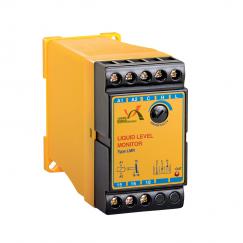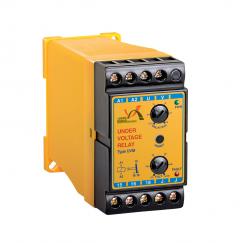LMR
Control of pumps
Protection of water pumps against dry running (without water) ® Avoiding tanks overflow
Tanks automatic filling
Recognition of liquids conducting capability
One display signal:
OUT: Output energization
Principles of Operation:
This device is applied for controlling the level of elecincally conductive liquids like woter. wastewater, basic and acidic solutions or any liquid containing water.
This device operation is based on electrical resistance measurement so that the path resstance will change if conductive liquids exist or do not between electrodes con- nected to the device. Consequently. device acts.
Sensitivity Adjustment:
Device sensitivity is adjustable by SENSITIVITY potentiometer hanclle. It is better to set the sensitivity on minimum for common water and solutions while we are able to raise it in the case of low conductive liquids like distilecl water.
Sensitivity should be raised where well or tank distance to the device mounting po- sition is more than common. Simply. to set the sensitivity. all three electrodes L C and H have fo be put in the liquid. Then. sensitivity adjustment potentiometer handle is tumed counterclockwise fill relay opens and output signal gets ON.
Single Wire Electrode:
Its maternal is brass and antinust. It is used for detenmnination of liquid levels. The electrode has Q plastic casing to maintain the electrode distance from the tank wall or well pipe. Its recommended to use stranded wire No. 1.5 with proper insulation for connecting elec- trodes to the device.
Technical Specifications:
Supply Voltage: 220 VAC + 10%
Network Frequency: 50 +5 Hz
Internal Loss: 3 w
Sensitivity: 1 to 10 Kn adjustable by SENSITIVITY potentiometer handle
Max. Electrode Voltage: 20 VAC. isolated
Max. Hectrode Current: 1.5 mA
Allowed Electrode Cable Length: 1 Km
Output Relay: a C/O centact
Contact Current: 6 A. 200 VAC- 6A. 28 VD






